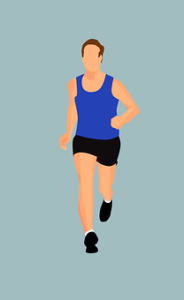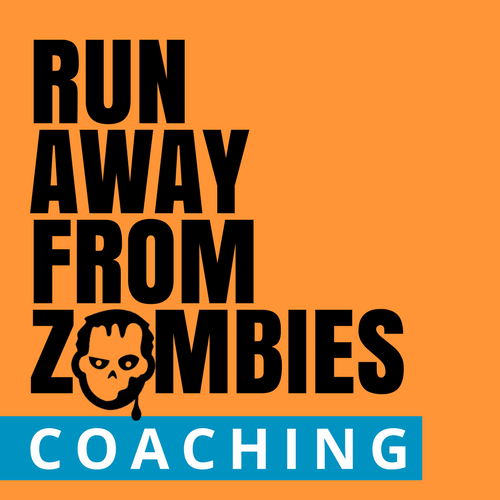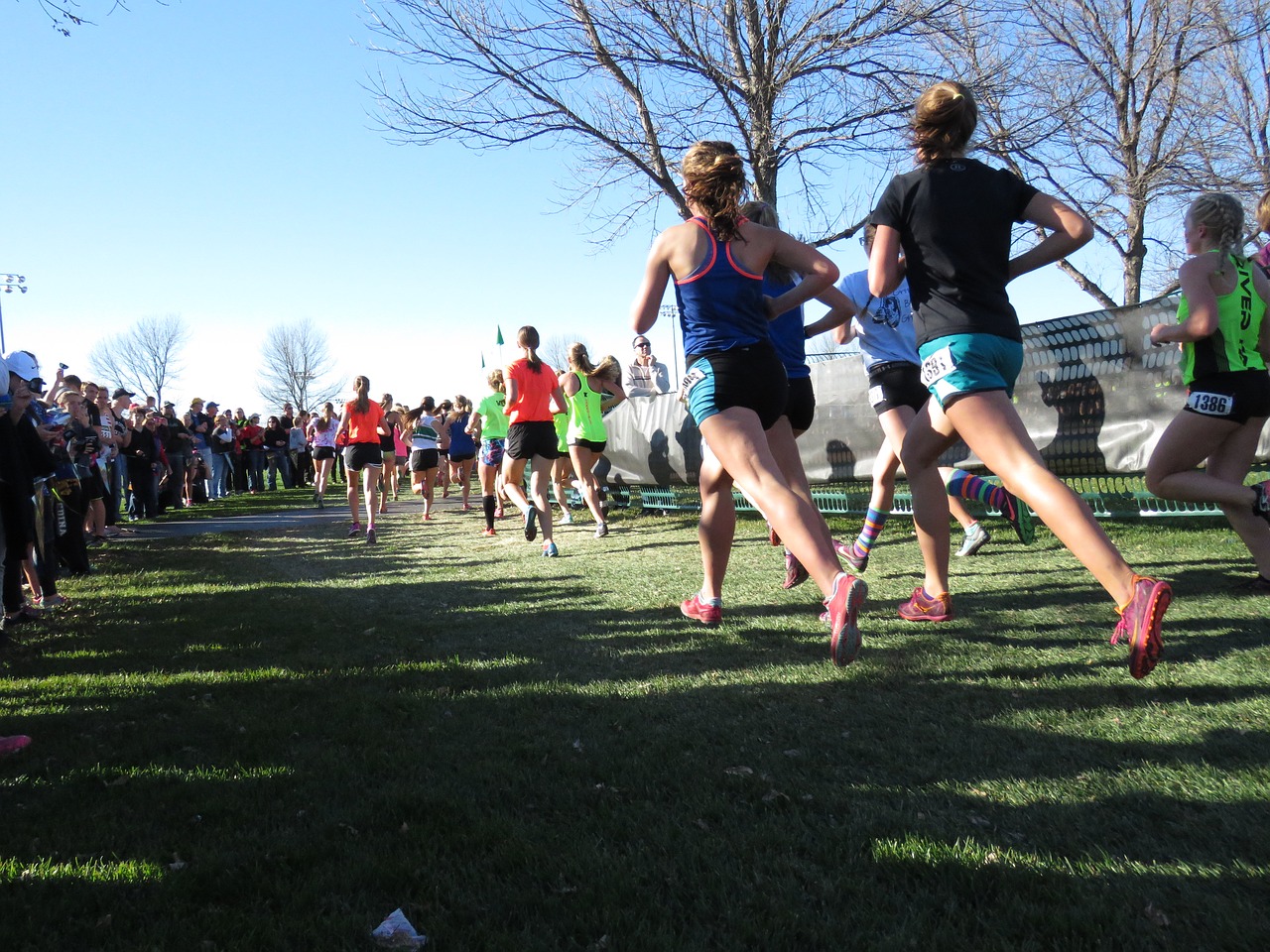January is the perfect time to try something new, start a new goal, or build towards something healthy. And with lots of people making New Year’s resolutions, you’ll be able to find company and accountability. What running goals would you like to set this year? Here are 14 ideas to get you thinking. (Also see the end of post for a flash sale!)
Running Goals: Ideas for 2018

Mileage Goals
1. For the Year
How many miles do you want to run this year?
Annual mileage goals are flexible and encourage you to stay active the entire year. You can balance off-season, lower mileage months with intense training, peak mileage months. If you get injured and need some time off from running, you can drop that month from your running plan and decrease your mileage goal accordingly.
2. For the Month
This can work in a couple of ways:
- Set a monthly minimum – Aim for a mileage you’d like to achieve, even if you are in your off-season.
- Include cross training – Apply mileage from activities such as swimming, deep water running, or cycling to your goal mileage.
- Work toward a peak month – Say you’re trying to get to your first 100 mile month. You can build your running base to safely increase your mileage throughout the year to reach your goal.
3. For the Week
Your goal may be to increase your average miles per week (MPW). If you typically ran 20 mpw last year, you could aim to build to an average of 25 or 30 mpw. You could do this by increasing the distance of some of your runs or by adding another running day.
Increasing your mileage base will give you a stronger aerobic foundation and the flexibility to jump into longer races without a hard training cycle to accomplish your running goals.

Races
4. A Race Every Month
Run in one race every month.
It could be local 5Ks or a travel destination half marathon, depending on the month.
If you live in any moderately-sized town, there are often races every weekend, so this goal has some flexibility. It can also keep you accountable, since signing up for a race doesn’t take much time or effort, but then you feel obligated to show up.
This goal can be expensive, especially if you’re paying for races last minute. Also, constant racing can interfere with your long runs and training for larger running goals you may have.
5. A New Race
This can be a race for a distance you’ve never attempted before, like a half marathon, marathon, or ultra. It could also just be a different type of race – such as a trail race or in a unique location, dealing with travel.
You may have multiple goal races which could help form the training cycles for your new year.
6. A Personal Best
Attempt a personal record for a distance you’ve run before.
Develop and work a 8-18 week training cycle to improve the racing time of your favorite distance. If you need help, I can develop a training cycle for you.
Build Accountability or Fellowship
7. Join a Running Group
Running doesn’t always have to be about metrics and personal goals. Running can be a way to incorporate yourself further into your community, meet new people, forge new friendships, and maybe get in some extra miles along the way.
Check out the RRCA website or your local running store to find out where and when running groups meet in your area.
8. Get an Accountability Partner
This could be someone who runs with you once or more a week. It could also just be someone you trade training logs with to make sure that you’re staying on track. Having one person intimately involved in your training, knowing your personal ups and downs, can make running more serious, real, and important to you.
Check your friends for someone who might be looking for the same accountability or push.
9. Volunteer
Volunteer at your local YMCA children’s program, Girls on the Run, or make a goal to volunteer in a certain number of races this year. Give back to the running community that has given so much to you.
Consider volunteering for any big race that you aren’t planning on running yourself.
10. Hire a Running Coach
If you want to make sure your training is the most efficient, that you’re making the best progress, I recommend hiring a coach to assess your fitness and build you toward your running goals. With their outside view, they can easily see weaknesses and help you improve them before they become injuries, prevent training errors, and create some accountability in your week.
Check out the RRCA website for certified coaches or by contacting your local running store. I also have availability open for new clients.

Supplement Your Running
11. Add Cross-Training
Cross-training exercises mimic the action of running by working the same muscles and having a cardiovascular component. Cross-training is a great way to increase your aerobic base while decreasing your injury risk.
You can cross-train on a day you previously rested or as a second workout in the day (like doing double run workouts, but with less stress on the body). Try deep water running, cycling, or swimming.
12. Incorporate Yoga
Is a yoga goal a running goal? Perhaps. Committing to a regular yoga practice might help keep you running for a long time.
Using yoga to supplement your running can be a yin to yang (quite literally if you take yin yoga) or at the very least, make you do those stretches that you know you should do.
13. Build Strength
If you aren’t doing supplementary strength building to help your running, you might be leaving yourself open to injuries due to imbalances in your muscles.
Commit to doing a ten minutes of strength training twice a week, build reps and sets in a more complicated workout like Matt Fitzgerald’s Tomahawk routine, or hire a personal fitness instructor to get a more customized plan.
You will be amazed at what kind of power you’ll gain and how less frequently you’ll be stopped by an injury.
Fix a Problem
14. Fix a Nagging Niggle
If you have a recurring physical pain, consider making this the year to figure it out. See if your local running store or physical therapy clinic does free injury screenings or injury clinics. Get a referral to a physical therapist and learn exercises that you can do to strengthen your problem area.
Use the year to experiment with cross training, strength building, or stretching to increase your flexibility, mobility, range of motion, etc. Fix it, so you’re not always afraid that it’s going to rear its stupid head.
Important Things About Goals
- Own it
- Make it significant
- Make it realistic
If it’s a goal that you just think sounds good or something you should do, it’s not going to stick. Your running goals should be important to you and a focus of yours. So figure out what makes your heart happy, your runs better, and your life worthwhile – and go for it. Let’s take on 2018. Let’s go.

FLASH SALE!
Have a goal in mind, but not sure how to start? I’ve got a flash sale to help you jump start 2018.
One month custom run plan for $15. Can’t beat that! Sign up here.






Your smile is enough to make anyone’s day. It’s like a ray of sunshine breaking through the clouds, instantly lifting spirits and spreading warmth. Your genuine happiness is contagious, and it reminds everyone who sees it of the simple joys in life. Keep shining that radiant smile!